Discover 11 hidden attractions, cool sights, and unusual things to do in Dillingen (Germany). Don't miss out on these must-see attractions: Altes Schloss, Bunker 20, and Katholische Pfarrkirche Heilig Sakrament. Also, be sure to include St. Johann in your itinerary.
Below, you can find the list of the most amazing places you should visit in Dillingen (Saarland).
Table of Contents
Altes Schloss

Museum in Dillingen, Germany. Altes Schloss is a castle and museum in Dillingen, Saarland, Germany.[1]
Address: Schlossstraße 1, Dillingen
Bunker 20
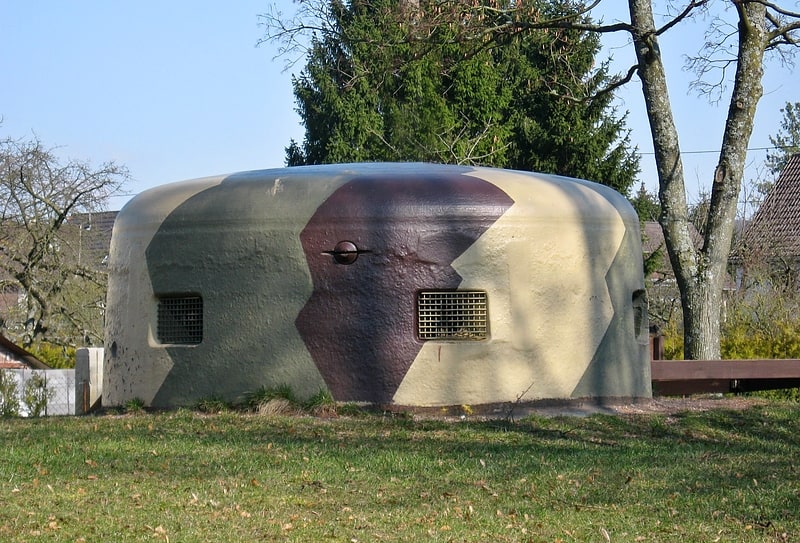
Also known as: Westwallbunker
Museum in Dillingen, Germany. Westwallbunker is a bunker and museum in Saarland, Germany, that was part of the Siegfried Line.[2]
Address: Annastr. 24, 66763 Dillingen
Katholische Pfarrkirche Heilig Sakrament

Also known as: Saardom
Building in Dillingen, Germany. The so-called Saardom in Dillingen/Saar is one of the largest sacred buildings in Saarland. It is the parish church of the parish of St Sacrament. The parish belongs to the parish community of the Holy Sacrament, St John the Baptist in Dillingen, St Joseph and St Wendelin in Diefflen, St Maximin in Pachten, and St Mary consolation of the saddeneds on the Pachtener Heide. The church belongs to the Roman Catholic Diocese of Trier. The feast of dedication is the Solemnity of the Most Holy Body and Blood of Christ.
The church was built between 1910 and 1913 according to plans by the Trier church-architect Peter Marx (1871-1958), mainly in the Neo-Romanesque style. The prototypes of the Saardom include the towers of the Bamberg Cathedral, the towers of the cathedrals of Laon and Naumburg, and the facade of the Cathedral of Metz.[3]
St. Johann

Built in the years 1844 to 1845 in the style of late classicism, the listed church of St. John in Dillingen is a Catholic church and belongs to the parish community of Dillingen, which is divided into the five parishes of St. Sacrament, St. Joseph, Maria Trost, St. Maximin and St. John. It is the mother church of Dillingen's inner city parishes and is popularly known as Alt Kirch. The church is assigned to the diocese of Trier. Patronal feast day is the Solemnity of the Nativity of St. John the Baptist.
Address: Hillenstraße 3, 66763 Dillingen/Saar
Hillenkreuz
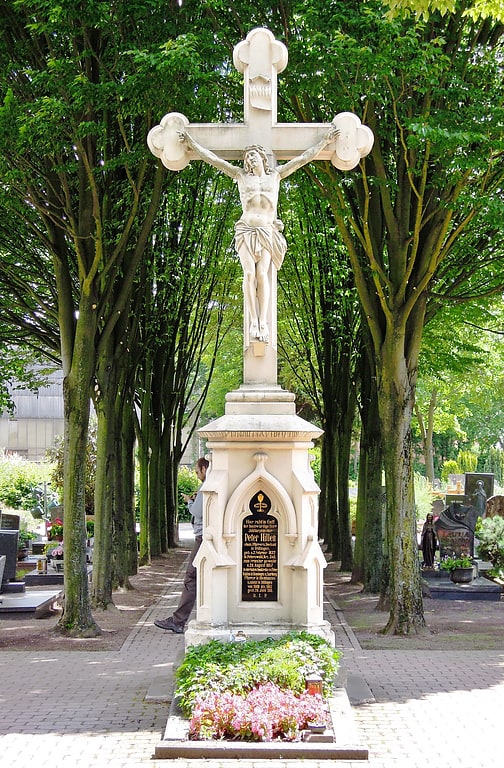
Memorial
WH 46
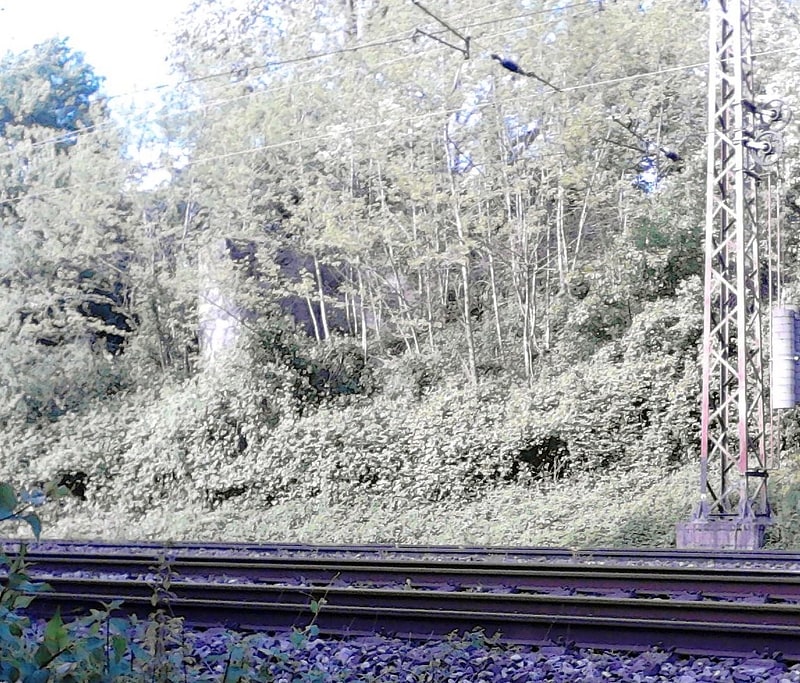
WH 47

Spedition Rein

Address: Carl-Zeiss-Str. 25, Dillingen
Bodinets-kreuz
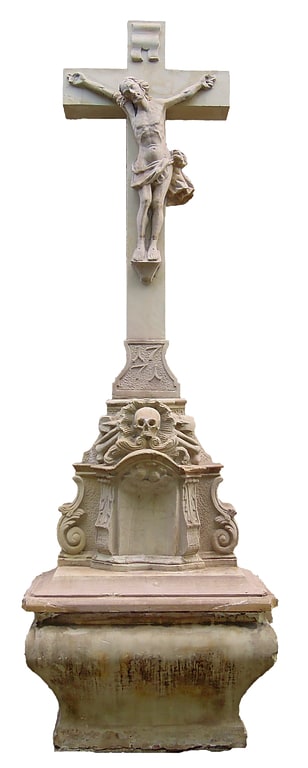
The 1771 Swedish Cross stands on Hillenplatz on the east side of St. John's Church in Dillingen, Saarland.
Defrance-Gruft

The Defrance crypt is a listed chapel-shaped tomb built around 1900 in the Sankt Johann cemetery in Dillingen.
In the crypt there were several graves. On the memorial plaques placed on the inside of the tomb are written: Marie-Hélène-Émélie Peaucellier, née Defrance le 17 Juin 1843, décedée le 21 Février 1872, Léonie Defrance, née Jaunez, née le 1 Septembre 1848, décedée le 5 Juin 1888
Marie-Hélène-Émélie Peaucellier was one of the three wives of Charles-Nicolas Peaucellier, who was first reburied in the tomb from Paris. The reburial took place in 1919 shortly after World War I in what was then the French Occupation Zone for the Grand-Officier de la Légion d'honneur with full military honors. In 1929, another reburial took place in the Peaucellier crypt in Wallerfangen. His wife Marie-Hélène-Emélie was also reburied in Wallerfangen.
Since only deaths were officially documented, the sources are sparse. They are based on statements of Henry Villeroy de Galhau and Jean Cazal director of the Fayenceries de Sarreguemines and the last official Dillingen gravedigger Johann Thomaser present at the reburial. The second plaque reads: Jean Louis Piette, né le 29 Juin 1767, décedé le 23 Mars 1833, Marie-Georges Jules Piette, né le 2 Septembre 1815, décédé le 9 Août 1847, Anne-Gabrielle Piette, née Wurmser, née le 6 Janvier 1779, décédée le 15 Janvier 1851
The Piettes were related to the Defrance family and were moved from the old cemetery to the crypt in 1872. On the initiative of the local historian Aloys Lehnert, research in the 1960s was to determine the actual state of occupancy. With the support of the Compte de Bonneville, the then Secretary General of the Dillinger Hütte, the tomb was opened on January 28, 1966. On the left side, only empty niches and a coffin handle were found. The contents of the right side were not determined, as it was completely walled up.
The crypt was hardly affected by the devastation of the cemetery during the Second World War. In 2006, the crypt was restored in consultation with the state conservation office. In 2009, the commitment of the city of Dillingen was recognized with the Saarland Monument Preservation Award in the Public Owners group.
Cholerakreuz
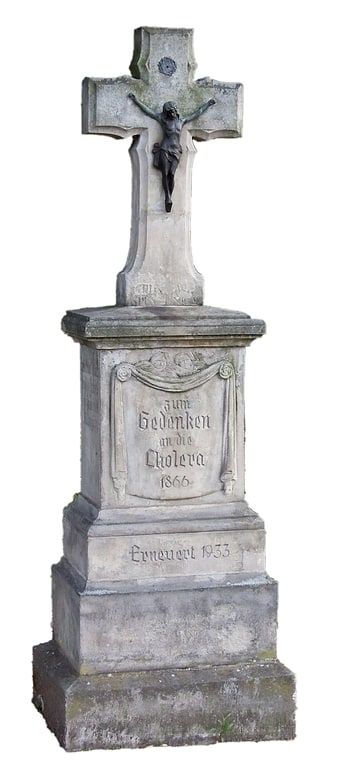
Wayside shrine